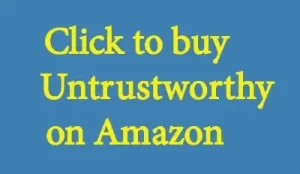Working With a Facebook Page
How do you go about working with a Facebook page?
Keep in mind that Facebook is constantly A/B testing (e. g. checking to see if new layouts or color schemes, etc. will make you click more), so these instructions might be a little out of date after a while. This is what currently works. Caveat emptor.
Adding Images When Working With a Facebook Page
Images are always helpful. Use them as a measure of branding for your work and always use images you have permission to post!
If someone else created or photographed an image you are using, even if you now own the rights, it is a courtesy to link to them and give them a shout out.
A lot of my father’s and husband’s photography is on my personal author page, and people like to see newer work from them.
It’s just another way to acknowledge that this is a community and this solitary pursuit is far from being completely solitary.
Some Details for Working With a Facebook Page
Since these change all the time, I can’t go into a lot of detail (sorry!). However, for your company or author page, you’ll most likely want to add to and update things like the background image. Add events and post to the wall as you like.
I would also strongly suggest adding an image every single time you update. Text-only updates get lost in people’s feeds. Images are less likely to be missed.
Working On And Handling Updates
It’s all about the updates. You can schedule a few months in advance, so make a point of doing this.
You can cover a lot more if you spread out your work and set it to emerge at various times; just look at your insights to get an idea of when people are online, and match to those times as well as you are able to.
Setting Up a ‘Buy Now’ Button
You will definitely want one of these. Right in front of your background image, there are three buttons. The one on the left (which is actually in the middle of your background) is a variable.
Pull down on it and choose what you want to showcase. Select Edit Call to Action and enter a link directly to buy your work. Be sure it is a link directly to your work on Amazon or Smashwords or wherever.
That is, clear away the extraneous junk on the URL. So, for Amazon works, this is everything after the ISBN.
If you have nothing to currently sell, you can always upload a YouTube video and change the call to action to a call to watch a video on your site. There are other choices such as Call Now. So, use whatever works best for your needs.
And if you want to start advertising on Facebook, well, that’s a whole other thing…
Want More About Facebook?
If my experiences with Facebook resonate with you, then please be sure to check out my other blog posts about the largest social network on the planet, by far.
• Creating a Facebook page
† Working with a Facebook Page
• … Your Profile Page
† Home Page
• Offsite Sharing
† All Your Account Settings
• All the Rest of It
† Facebook versus Forums




You must be logged in to post a comment.